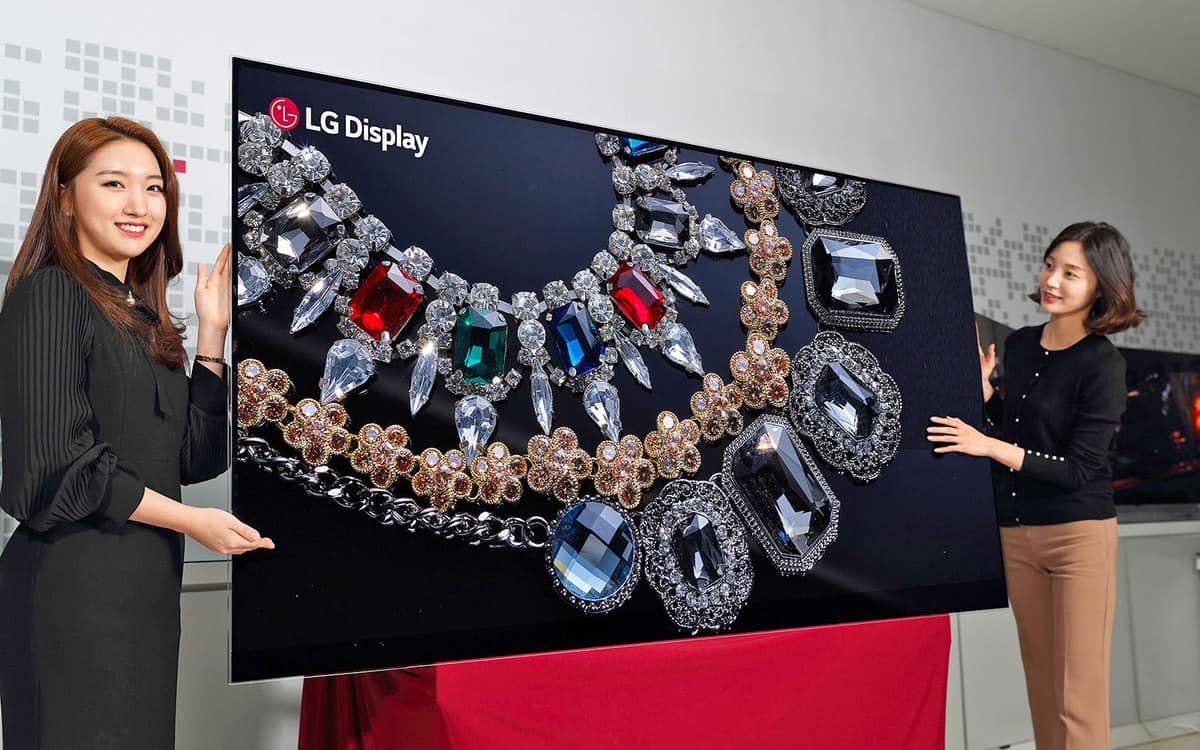Any links to online stores should be assumed to be affiliates. The company or PR agency provides all or most review samples. They have no control over my content, and I provide my honest opinion.
CES 2018 is upon us, and one of the leading attractions will be all the new fancy TV tech. For years we have waited for organic-LED to go into mass production, and thanks to LG that has now become a reality.
It has been claimed by many that OLED is the ultimate screen panel technology as it does not require artificial backlights and therefore offers perfect black levels. However, some companies, in particular, Samsung have eschewed the new technology in favour of developing their own unique LED variations. One could argue that the reason for this is that LG is the sole producer of large OLED panels and Samsung don’t want to be beholden to them.
Samsung already uses quantum dot LEDs (QLED), and this year they are rolling out another new LED tech called Micro-LED.
Combined with that, OLED is still beyond the reach of your average consumer due to price, though these are going down, so the market is still dominated by more traditional technology.
So, what are the differences between each display?
LCD / LED TVs
With a traditional LCD/LED TVs the liquid crystals that create an image do not have any natural light-emitting properties of their own. So, for us to see the image a backlight has to be applied illuminating the screen. The problem with this the light you shine through the display effect neighbouring pixels, in particular, the black areas of the display can look washed out and grey. The LED name comes from TVs using LEDs for the backlighting, and how well they perform depends on how it is implemented. Most TVs, in particular, the cheaper ones use backlights around the edges which can suffer from quite a bit of light bleed. Some companies like Panasonic implement local dimming on their more expensive TVs. This breaks down the TV into many sections and illuminates the LED there, reducing backlight bleed and improving the colours.
Another downside of this technology is that powering all the LEDs can use a lot a bit of electricity, though not as much as the now dead plasma.
OLED – Organic Light-Emitting Diode TVs
This has long been claimed to be the ultimate TV technology. Unlike LCD when an electrical current is passed to the individual pixel it emits light by itself. When a pixel has no power, it becomes pitch-black. This eliminates the backlight bleed found on all LCD based TVs, allowing the colour reproduction to be far more varied and accurate to traditional LCDs with blacks being absolute black rather than washed out of varying degrees.
As a bonus, because you do not fit backlights into the back of the TV, the OLED is generally far thinner than an LCD, and it usually requires less energy to power.
OLED comes with downsides though. As there are no additional backlights, it doesn’t easily achieve the peak brightness found on other TVs, which is a fundamental requirement of the new HDR standards. There are also some issues with response times, it is not a significant issue for most people, but if you play fast action games on your screen, it may not Performa as well as a well-specced LED.
Traditionally it suffered from burn issues and longevity problems similar to Plasma. So, a static image on the screen for a long time would burn into the display. This has mostly been overcome now, and it is one of the reasons why it took so many years to become mainstream. This problematic technology does mean that the TVs cost a lot of money.
There is a trickle-down effect as technology improves, and prices are dropping as more people invest in OLED and companies develop the manufacturing process.
This year LG will be showing off its 88-inch 8K OLED TV.
Quantum Dot LED TVs – QLED

Samsung doesn’t think OLED is all that, they flat out claim QLED is better, some would say that they don’t want to buy panels off LG, instead of producing their own.
With Samsung heavily pushing HDR, in particular, their HDR10 technology, it is essential to be able to achieve a high peak brightness. HDR makes the bright parts of an image super bright giving you a more natural effect on the image quality. Colour accuracy is also a critical part of HDR. So being able to use backlights is quite handy to help achieve the peak brightness some TVs produce.
To overcome some of the issues faced by LCD/LED Samsung have developed quantum dots. These are microscopic molecules that, when hit by light, emit their own, differently coloured light. The dots are contained in a film, and the light that hits them is provided by an LED backlight. That light then travels through a few other layers inside the TV, including a liquid crystal (LCD) layer, to create the picture.
So, this technology sits somewhere between standard LEDs and OLED. Colour accuracy is dramatically improved, brightness is exceptional while, and backlight bleed is minimised.
While QLED is excellent, in general, most critics still prefer OLED. Samsung is working on Emissive QLED technology, which means each sub-pixel in the display provides its own light rather than relying on the backlight, this should give a considerable boost in performance, but it is not commercially viable yet.
Micro-LED
Lastly, the new-ish technology being used this year is Micro-LED. Micro LED displays have much smaller LEDs, typically smaller than 100 micrometres, with each LED chip acting as a pixel.
I say it is a new-ish technology because Sony announced a TV way back in 2012. However, it was too expensive to produce to be commercially viable.
This year it is believed that Samsung will announce a 150-inch Micro LED TV, and the technology could be a successor to its existing range of mid-to-high-end QLED TVs.
Which TV should I choose?
This is always the big question, and the answer really depends on you. Mid to High-end TVs from all the big companies are always a safe bet nowadays each TV will have its pros and cons, but at the end of the day, the performance should be great.
If you can afford it, you ideally want to be looking for Ultra HD Premium, this generally means the TV will conform to all the current HDR standards.
If I were buying this year and had the money, I would personally try and get OLED. Just make sure you look at both critic and user reviews before you buy, and buy from a reputable dealer with a good return and warranty program.
I am James, a UK-based tech enthusiast and the Editor and Owner of Mighty Gadget, which I’ve proudly run since 2007. Passionate about all things technology, my expertise spans from computers and networking to mobile, wearables, and smart home devices.
As a fitness fanatic who loves running and cycling, I also have a keen interest in fitness-related technology, and I take every opportunity to cover this niche on my blog. My diverse interests allow me to bring a unique perspective to tech blogging, merging lifestyle, fitness, and the latest tech trends.
In my academic pursuits, I earned a BSc in Information Systems Design from UCLAN, before advancing my learning with a Master’s Degree in Computing. This advanced study also included Cisco CCNA accreditation, further demonstrating my commitment to understanding and staying ahead of the technology curve.
I’m proud to share that Vuelio has consistently ranked Mighty Gadget as one of the top technology blogs in the UK. With my dedication to technology and drive to share my insights, I aim to continue providing my readers with engaging and informative content.







